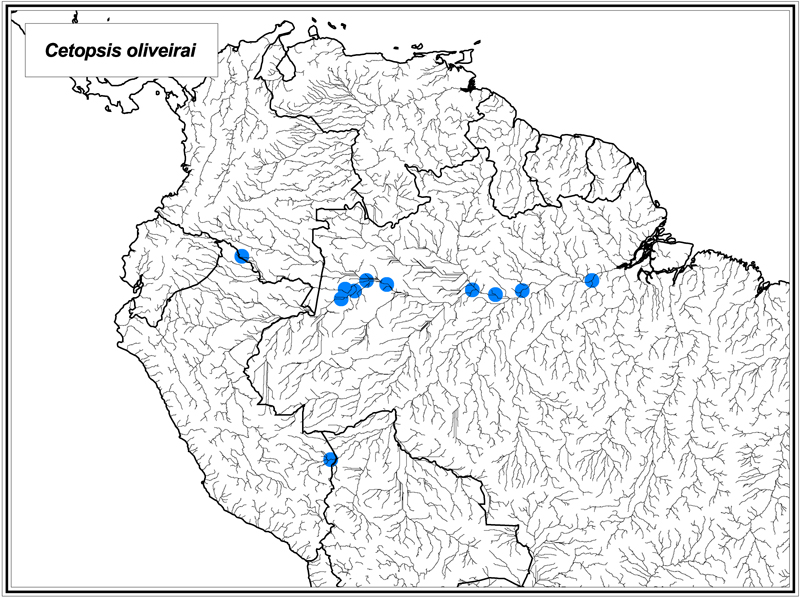
Reproduced from Vari, Ferraris and de Pinna (2005).
Cetopsis oliveirai (Lundberg & Rapp Py-Daniel, 1994)
Identification: Cetopsis oliveirai can be readily distinguished from all other members of the Cetopsinae by its complete absence of eyes (versus the presence of those organs in all other species of the Cetopsinae) and the presence of extremely-elongate distal filaments on the first ray of the dorsal fin (length of fin longer than one-half of the SL) and pectoral fin (filament extending posteriorly to beyond the vertical through the middle of the base of the anal fin). It is further distinguished among the species of Cetopsis by the number of total anal-fin rays (17 to 19 versus 22 or above in all congeners) and caudal vertebrae (25 or 26 versus 28 or above, respectively). Maximum size: 36 mm SL.
Range: Cetopsis oliveirai is known from the middle and upper portions of the Amazon basin in Brazil and Peru. Because C. oliveirai inhabits a difficult to sample habitat, the middle and bottom portions of the water column of main river channels, it is likely that the actual distribution of the species is distinctly greater than is indicated by the available population samples.
Information from Vari, R. P., C. J. Ferraris Jr. & M. C. C. de Pinna. 2005. The Neotropical whale catfishes (Siluriformes: Cetopsidae: Cetopsinae), a revisionary study. Neotropical Ichthyology 3:127-238.
